The Heflin UFO Photographs
Solid Citizen Provides Hard Evidence of a Flying Saucer in 1965
Rex Heflin was ready to reach for his camera when a bright reflection caught his attention. The Orange County (California) Road Department highway maintenance engineer was preparing to photograph a bushy branch that was obstructing drivers’ view of a railroad crossing sign.
It was half-past noon on August 3, 1965. Outside the window of his work truck, some type of thing was approaching in the sky. The machine was flying in ways he could not understand. It also appeared in distress, wobbling like a slowing gyroscope.
Heflin estimated the object was about 20-feet across, comparing it to the road, which he knew was 20-feet wide. Shaped like a flat-brimmed pork pie hat, it looked metallic. The superstructure was a cylinder shape, circled by a black band. The rim at was flat.
On the underside, a beam of light emanated from the center of the disk toward the rim, circling the bottom like the sweeping line on a radar screen. He estimated it went around every couple of seconds. Visible in Photograph 1 at the top of this article, a circle of dust stands up from the ground along the shoulder, indirectly underneath the object.
With all that going on, Mr. Heflin kept his cool. He trained the Polaroid 101 Land Camera on what was passing in front of his work truck. In doing so, Heflin captured three clear images of what appear to be a machined, intelligently controlled object of unknown origin, a genuine flying saucer.
A montage composed with parts of the three Polaroid photographs that contained images of the unidentified object.
Heflin In His Own Words
“I first observed it out the left window of the cab, and I thought it was a conventional aircraft at the time. However, just a second or so later, it became obvious it wasn't a conventional type aircraft; and it attracted my interest to the point of picking up the camera and actually taking a photo of it is it crossed the road in front of me.
“And I simply took the camera and aimed a quick picture. And these type (Polaroid “instant camera” photographs) come out and are developed out of the camera. Another sequence followed as the object moved across and out the other side – the right hand side – and it (the photo) was removed (from the camera). All of these photos develop outside the camera.
“Well, this photo is the number one photo taken through the windshield of the cab, followed by a number two photo out of the righthand window. And then of course the number three photos.
“I think they're remarkable photographs, not because I took them, but because what they portray and show. And, as far as the rest of it, I could care less as to who believes what, because I know what I saw.
“I had the camera ready because I wanted to photograph these trees and the obstruction. I knew it was something different. It was not, definitely not, a helicopter or an aircraft as we know them. And it didn't seem to have too much altitude. And it crossed over in front of me. And I picked up the camera and took the first picture at that point. And it continued to hover, (going) in a slow motion to the right side, where I got two more pictures.”
Rex Heflin made copies of the photos and shared them with friends. As word spread, a local newspaper did a story on the photos. The story drew the attention of top secret military officials, or agents posing as such.
The following quotes are from a second interview, several decades later.
“The people who came over identified themselves as being from NORAD (the North American Aerospace Defense Command).
NARRATOR: The men asked for Rex's original Polaroids. They didn't know he'd made copies.
“But, they sort of demanded them. And, so, I let them have the pictures. I thought, ‘Why not?’”
NARRATOR: In the meantime, Rex also made history in a different way when the photos reached a wide young audience.
“And when the Encyclopedia Britannica Yearbook came out in ’66, they published a photo of it and they classified it under “Spacecraft” (entry).”
NARRATOR: But the originals themselves, they were gone for 28 years until one afternoon, not long ago, when they showed up in Rex Heflin's mailbox.
“The phone rang and there was a lady's voice on the phone, advising me to check my mailbox. And I checked the mailbox and there was a small tan or manila mailing type envelope in there and with my name on it and it had those photos. And there was no postage. It was delivered privately.”
NARRATOR: Have you seen any other UFOs since?
“No, no. Not even after three martinis.”
Four Priceless Polaroids
Even in the easiest of circumstances, using the early Polaroid cameras required a thorough understanding of the picture-taking machine and the instant photographic process. Imagine doing so while watching a flying saucer from a few hundred feet away? Who could look away to grab a camera?
Because of his familiarity with the Polaroid 101 Land camera, Mr. Heflin could observe the object and do what he needed to photograph it automatically. As he watched the object approach, Heflin expertly adjusted and aimed the camera, having previously extended its bellows lens and loaded a fresh film pack. He even had the presence of mind to frame the object near the center of the image.
As Rex Heflin held his breath, he lightly pressed the shutter without moving the camera, evinced by the sharpness of the images as measured by other objects in the frame like phone lines and shrubbery. After the first exposure, he grabbed a pull tab along the right edge of the back side of the camera and smoothly tugged out a photograph he laid aside for automatic development. He repeated the process two more times, creating three pictures in about 15 seconds.
Still keeping his eyes on the object, Heflin told investigators that the object moved slowly from his left side, and crossed in front of his truck, raising its front edge in the direction of movement, continuing perhaps 200 yards along the road. It slowed and wobbled like a gyroscope increasing its wobble as its spin slows down. The object then rose, and zoomed off suddenly, leaving a ring of smoke or condensation about four times the diameter of the object.
Special Thanks to Ufologist Ann Druffel
The late Ann Druffel investigated and chronicled what Rex Heflin experienced. Over the years, they became lasting friends who preserved a most important moment in human history — and the photographs he took in 1965 to prove it. Click here to read her article, “Goodbye Rex Heflin.”
As a friend to Mr. Heflin, she respected his story, in which he never wavered from stating, even after the US Air Force Project Blue Book team labeled him a hoaxer. In her work, Ms. Druffel led a scientific examination of the Heflin photographs and helped preserve the facts of the case for future analysis. Click here to read (PDF format) “A Reanalysis of the 1965 Heflin UFO Photos.”
Rex Heflin, Patriot
In all the relatively short time Rex Heflin controlled possession of the four Polaroids, and the long time others unknown had them as the images were published in books and magazines around the world, Rex Heflin never asked for money for their use or any other remuneration. He just wanted to share four images and their scientific data.
In addition to the photos, Heflin added his observations of the object in flight. The thing moved in a wobbly manner similar to a gyroscope slowed by friction. The wobble seemed to resolve as the object gained altitude. It then shot quickly to the north, leaving a smoke-ring about for times its diameter, dissipating as it rose in the sky.
At first, Heflin was hesitant to show the four Polaroid pictures to others. In the first instant, he believed the object might be one of our top secret aircraft in trouble. After the US Air Force said it wasn’t one of ours, the people at Project Blue Book called Mr. Heflin a liar and his photos hoaxes. Even then, Mr. Heflin never changed his story or positive attitude. He was a man of integrity.
Almost 60 years after they were taken, the photographs by Rex Heflin stand as among the best ever taken of an unidentified flying object. Clear as day, they show a flying saucer.



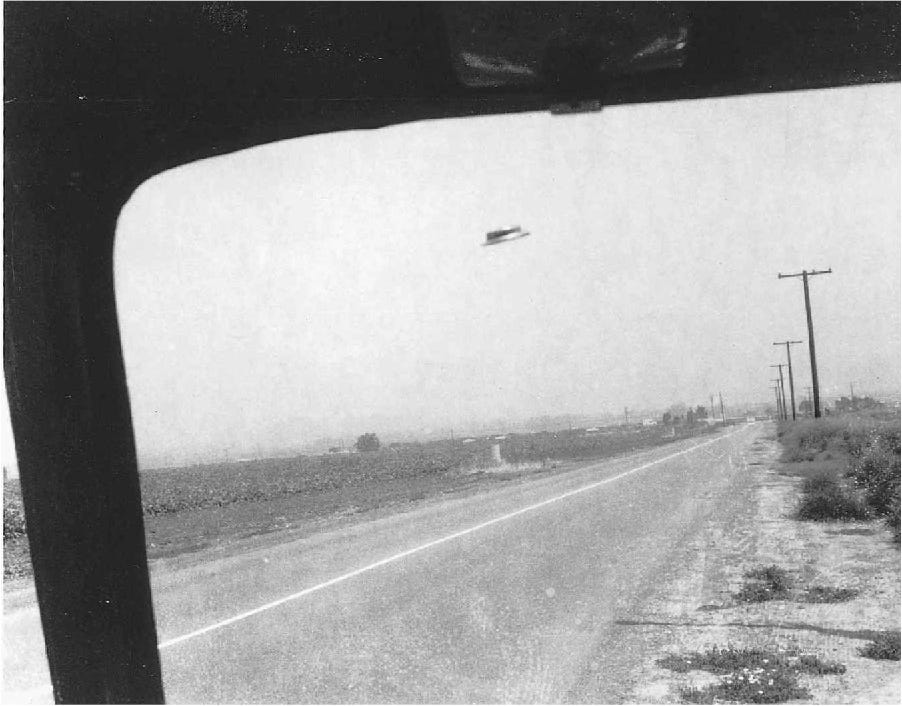
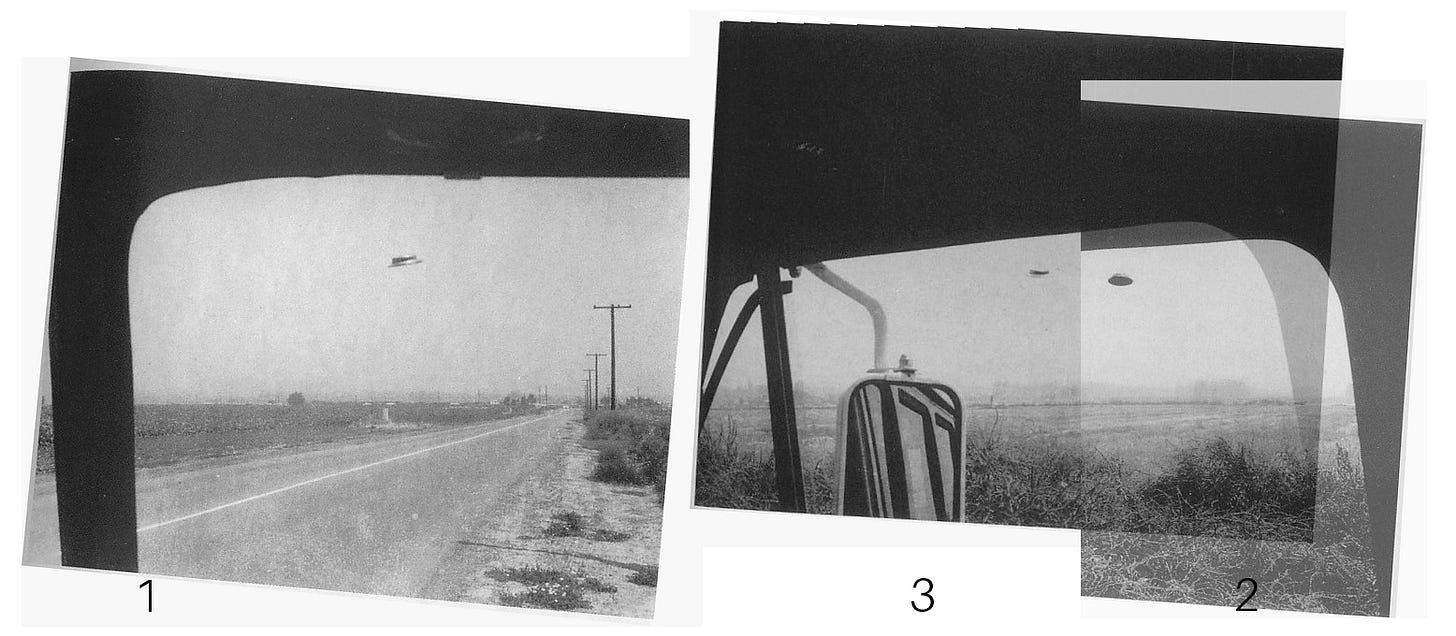

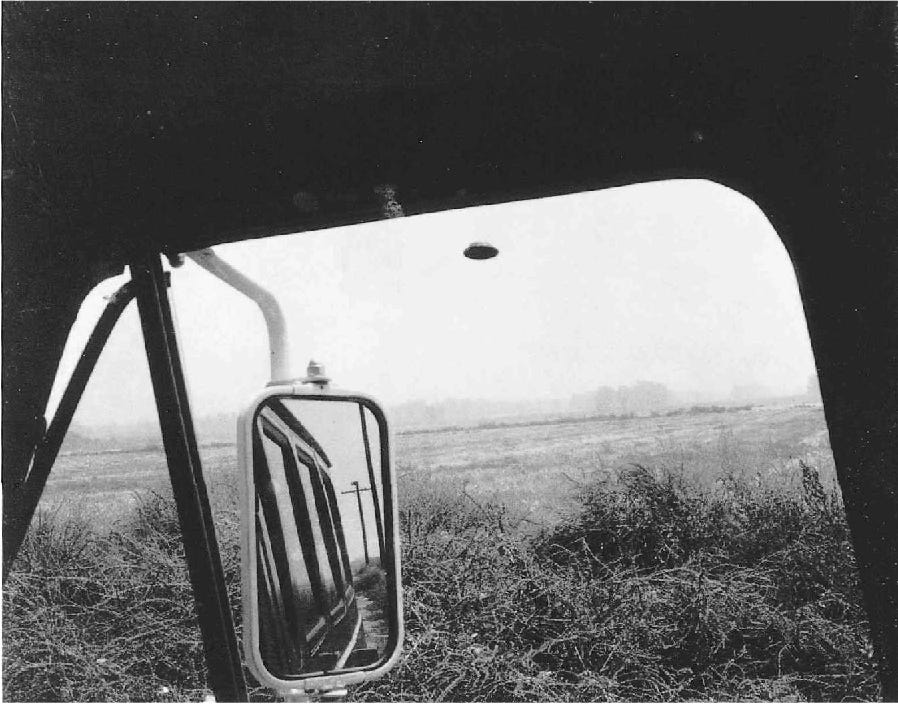
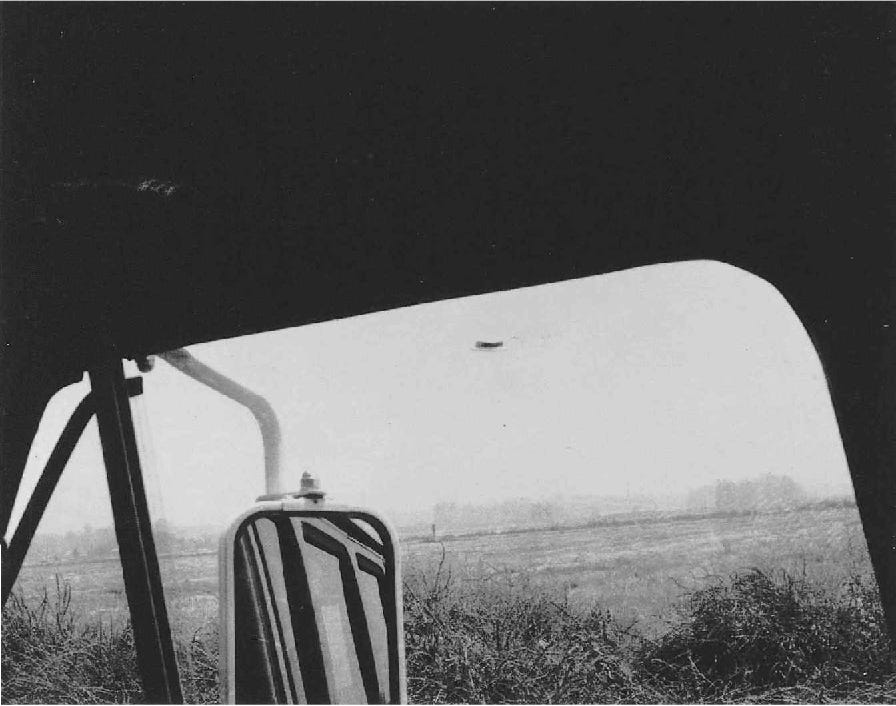
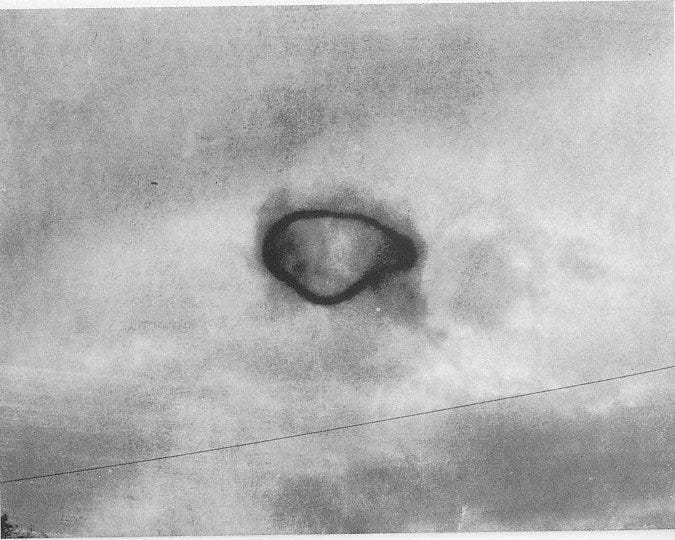
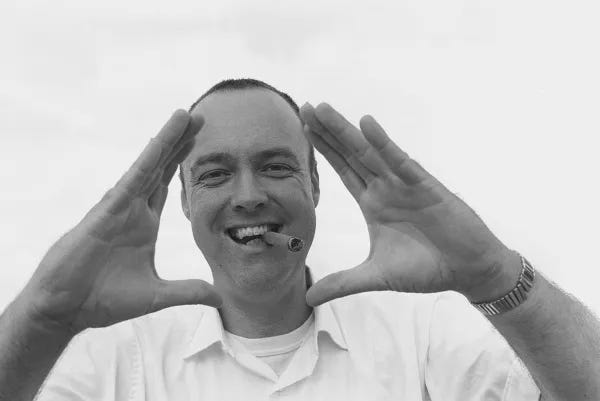
They are amazing images, whatever the phenomenon is (are) or the intelligence(s) responsible. Rex Heflin underwent all sorts of hassles for sharing the photos. He said if he ever took more, he wouldn't tell any body.
These photos have me completely convinced.